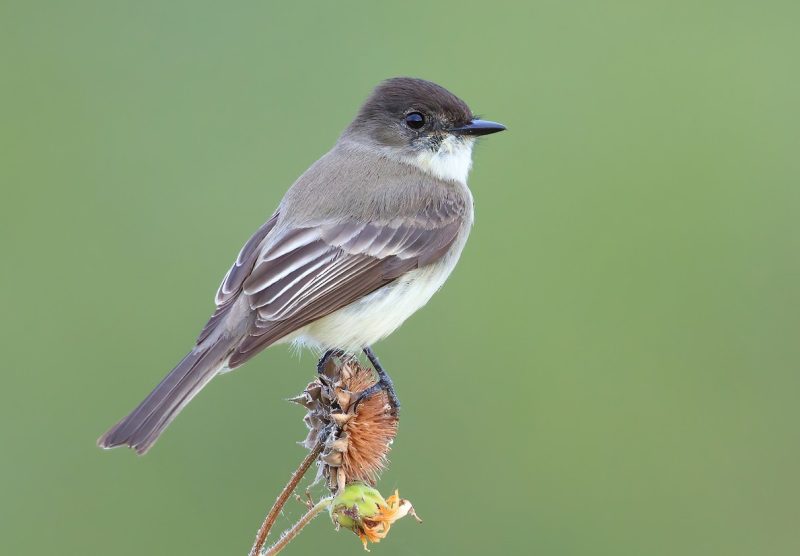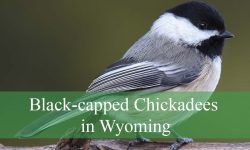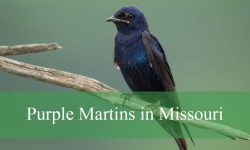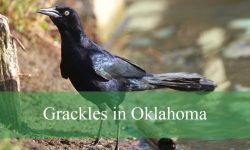Eastern phoebes are some of the earliest spring arrivals in New Hampshire, quietly appearing near homes, bridges, forests, and rocky ledges long before many other migratory birds return. Their soft “fee-bee” call echoes across wooded edges and farm buildings, signaling the slow transition from winter to spring. Although small and unassuming, these birds reveal behaviors far more complex than their calm appearance suggests.
New Hampshire’s diverse mix of forests, rivers, cliffs, and rural structures creates ideal habitat for eastern phoebes. The species adapts remarkably well to human presence, often nesting near houses and barns without hesitation. Their ability to thrive in natural and human-shaped landscapes makes them one of the state’s most enduring and observable flycatchers.
This article explores hidden facts about eastern phoebes in New Hampshire, shedding light on their migration patterns, feeding habits, nesting behavior, and ecological roles that most observers never notice.
Understanding Eastern Phoebes in New Hampshire

What Eastern Phoebes Really Are
Eastern phoebes belong to the flycatcher family and are easily recognized by their subtle plumage, dark head, and habit of flicking their tails while perched. Their coloration is muted, with shades of gray, olive, and white blending smoothly into forest environments. This modest appearance helps them remain inconspicuous while hunting insects in dense vegetation.
Unlike many vocal songbirds, phoebes rely on a limited but distinctive set of calls. Their repetitive “fee-bee” vocalization carries through early spring woods and serves as a key territorial signal. Their relaxed posture and steady presence give them a characteristic calmness that sets them apart from other flycatchers that forage more erratically.
Why New Hampshire Provides Excellent Habitat
New Hampshire’s varied landscapes offer a rich combination of insect resources, sheltered nesting locations, and open foraging spaces. Forest edges, riverbanks, cliffs, and barns create natural platforms where phoebes can perch, hunt, and build nests. The state’s numerous streams and lakes support large insect populations from spring to autumn, providing consistent food for adults and growing chicks.
New Hampshire’s climate also supports phoebe life cycles effectively. The timing of spring insect emergence aligns well with the birds’ return from southern wintering grounds. Cool early spring weather does not deter phoebes, making them one of the earliest seasonal residents to reclaim territories.
Where They Are Found Across the State
Eastern phoebes live throughout New Hampshire, from the White Mountains to the seacoast region. They occupy forested slopes, rocky ledges, suburban yards, farmlands, and even public buildings. Their flexible nesting habits allow them to take advantage of natural overhangs, culverts, bridges, and beams found in human structures.
Because of their quiet nature and tendency to perch in shaded areas, many people underestimate how common phoebes really are across the state.
Hidden Behaviors You Probably Missed
Their Tail Flicking Is Not Random
Phoebes frequently bob or flick their tails while perched. This behavior is a signature trait, but its purpose is often misunderstood. Scientists believe the movement helps signal alertness to predators and rivals, and may even assist in flushing insects from resting spots. The tail flick is therefore both a social cue and a foraging tool.
They Are Loyal to Nesting Sites
One of the most surprising traits of eastern phoebes is their strong site fidelity. Many individuals return to the same nesting location year after year, even using the same ledge or beam if it remains intact. In New Hampshire, long-term colonies form under barns, bridges, porches, and rock overhangs where generations of phoebes raise young in the same general area.
They Are Exceptionally Quiet for a Flycatcher
Compared to other flycatchers that use complex songs, phoebes remain relatively quiet. Their calls are simple, repetitive, and low in variety. This subtle vocal style reduces attention from predators while still maintaining enough communication for territory defense and mate coordination.
Anatomy That Supports Their Lifestyle
A Bill Perfect for Flycatching
Their short, wide bill helps them capture insects during quick aerial sallies. The bill opens wide to trap flying prey, allowing phoebes to catch insects mid-air with precision. Its shape also helps them snatch spiders and beetles from foliage when not hunting on the wing.
Wings Built for Short Aerial Dashes
Eastern phoebes make short, controlled flights from perches to capture insects. Their wings support swift bursts of speed and allow them to maneuver through branches and low vegetation efficiently. Unlike swallows, phoebes do not pursue insects over long distances but instead rely on short hunting trips.
Strong Feet for Clinging to Surfaces
Phoebes frequently perch on narrow branches, building beams, rafters, wires, and rock ledges. Their feet grip tightly, enabling them to remain steady in windy or unstable conditions. This helps them maintain efficient hunting positions where they can scan for insects.
Feeding Habits Across New Hampshire
They Are Highly Efficient Insect Hunters
Eastern phoebes feed primarily on insects such as flies, beetles, wasps, dragonflies, moths, and small winged ants. They use a “sit-and-wait” hunting style in which they perch quietly before darting out to capture insects in mid-air. This strategy reduces energy expenditure and matches New Hampshire’s varied insect emergence patterns.
Seasonal Diet Changes
In early spring, when insect activity is lower, phoebes supplement their diet with small fruits and berries. As temperatures rise, insects become more abundant, and adult birds focus almost exclusively on flying prey. When raising chicks, they search for larger insects rich in protein.
Foraging in Mixed Habitats
Phoebes forage along forest edges, near water, in clearings, and around buildings. These areas concentrate insect activity, especially during warm evenings. Their willingness to hunt near humans allows them to thrive in rural and suburban areas across New Hampshire.
Nesting and Breeding Behavior
Choosing Safe Nesting Spots
Eastern phoebes build nests on sheltered ledges, beams, rock shelves, or man made structures that offer overhead protection. In New Hampshire, barns, garages, culverts, and porches provide ideal nesting locations. Natural cliffs and waterfall overhangs also host populations.
Nest Construction
Females build the nest using mud, moss, and plant fibers. Mud forms the structural foundation while moss provides insulation. The inner lining includes fine grasses and animal hair to create a soft environment for eggs. This sturdy construction helps nests withstand spring storms.
Raising Young
Females lay four to six eggs and incubate them for about two weeks. Both parents feed the chicks, making frequent trips to capture insects. Chicks grow quickly and fledge after approximately 16 to 18 days, though they continue to follow parents for several days as they learn proper hunting techniques.
Two Broods per Season
In New Hampshire, phoebes commonly raise two broods each year. Their early arrival makes this possible and contributes to stable populations throughout the region.
Eastern Phoebes Across New Hampshire Landscapes
Forests and Woodland Edges
Eastern phoebes thrive along forest edges where sunlight filters through the trees and insects gather in warm pockets of air. These transitional zones provide ideal perches overlooking open spaces, allowing phoebes to scan for flying prey with minimal obstruction. Natural ledges formed by rocks, fallen logs, or tree roots give them sheltered positions for resting and preying upon insects. The mix of open visibility and nearby cover creates one of the most productive hunting environments for this species throughout New Hampshire.
Rivers, Lakes, and Waterfalls
New Hampshire’s waterways are prime habitat for eastern phoebes because aquatic insects hatch in large numbers throughout spring and summer. Phoebes frequently perch on branches that hang over rivers or on rocks jutting from stream banks, taking advantage of the continuous flow of prey. Bridges, dams, and culverts provide perfect artificial ledges that mimic natural cliffs, allowing phoebes to build nests above splashing water where predators rarely venture. Waterfall basins, with their constant insect activity, become reliable feeding hotspots that attract phoebes throughout the breeding season.
Farmlands and Rural Buildings
Pastures, open fields, and rural structures create excellent habitat for phoebes across New Hampshire’s agricultural regions. Farms offer a mix of open hunting grounds and shaded perches where birds can watch for beetles, flies, and moths stirred up by livestock or wind movement. Barn rafters, shed beams, and equipment overhangs provide sheltered nesting platforms that resemble natural rock shelves. Many of these sites become long term nesting areas passed down through generations of phoebes, creating multiyear family lineages tied to specific farms.
Suburban Neighborhoods
Phoebes adapt readily to New Hampshire’s suburban landscapes, settling near homes that provide both food and structural shelter. Porches, decks, drainpipes, and house beams create reliable nesting ledges with protection from rain and wind. Insects attracted to gardens, lawns, and outdoor lights give phoebes ample feeding opportunities. Their calm temperament and tolerance of human activity allow them to raise chicks successfully even in busy neighborhoods, making them one of the few flycatchers frequently seen at close range around homes.
Seasonal Rhythms in New Hampshire
Early Spring Arrival
Eastern phoebes return earlier than many migrants, often appearing while patches of snow still cover shaded forests. Their timing aligns with early insect blooms that occur during brief warm spells in late March and early April. Upon arrival, males begin establishing territories, frequently returning to the exact structures or cliffs used in prior years. Their familiar “fee-bee” call becomes one of the first natural sounds signaling winter’s retreat across New Hampshire.
Summer Breeding
Summer provides abundant insects and extended daylight, both of which support successful breeding. Phoebes build nests under protective overhangs and raise one or two broods depending on weather and food availability. Adults make continuous foraging flights throughout the day, capturing insects mid-air or gleaning them from nearby foliage. Chicks grow quickly in the warm conditions, and family groups soon expand into surrounding fields and wooded edges.
Autumn Preparation
By late summer and early fall, young phoebes begin practicing flight maneuvers and developing independent hunting skills. Adults reduce territorial behaviors and widen their feeding ranges as insect availability shifts with cooling temperatures. Families disperse from nest sites and gather in favored foraging areas such as river corridors and open meadows. This period helps juveniles build strength and fat reserves required for migration.
Southward Migration
Eastern phoebes migrate steadily to wintering grounds across the southeastern United States and into Mexico. Their journey depends heavily on insect availability along migration routes, making mild autumn weather advantageous. Phoebes maintain a moderate pace, stopping frequently to forage. Their migration is less conspicuous than flocking species because phoebes typically travel individually or in small groups, quietly leaving New Hampshire as the first frosts arrive.
Interaction With Other Wildlife
Birds
Phoebes share their habitats with a variety of birds including chickadees, wrens, bluebirds, warblers, and swallows. Because they use a sit-and-wait hunting strategy rather than aerial pursuit or foliage gleaning, they avoid direct competition for insects. Their predictable presence along woodland edges adds stability to mixed bird communities, especially in early spring when few other insect-eaters have returned.
Mammals
While mammals such as raccoons, mice, and squirrels occasionally explore structures where phoebes nest, the birds typically choose ledges and beams that provide natural protection. Elevated and semi-hidden nesting spots reduce encounters with predators. Larger mammals such as deer or foxes have minimal direct interaction with phoebes, though their movement can stir insects that phoebes quickly exploit for feeding.
Insects
Phoebes play a significant role in regulating insect populations. They consume flies, beetles, moths, wasps, and various aquatic insects emerging from rivers and lakes. Their feeding habits help balance insect communities in forests, fields, and suburban areas. By controlling pest species, phoebes indirectly support vegetation health and contribute to ecological stability across New Hampshire.
Myths and Misconceptions
Myth: Phoebes Only Live Near Water
Although waterways attract abundant insects, eastern phoebes regularly inhabit forests, cliff edges, barns, and suburban homes. Their adaptability allows them to use a wide variety of habitats well beyond riparian zones.
Myth: They Rely on Berries
Berries provide only limited early spring nutrition when insects are temporarily scarce. Once temperatures rise, phoebes switch almost entirely to insects, relying on their flycatching skills throughout the breeding season.
Myth: Phoebes Are Shy Birds
Despite their quiet voices, phoebes are not shy. They often nest close to human activity, showing little hesitation when people walk near porches, barns, or bridges that host their nests.
Ecological Importance
Beneficial Insect Control
Eastern phoebes help reduce populations of flies, beetles, and other flying insects across New Hampshire. Their foraging supports both natural ecosystems and agricultural landscapes by limiting pest outbreaks.
Indicators of Seasonal Change
Phoebes act as seasonal markers in New Hampshire. Their early arrival coincides with initial insect emergence and signals the return of ecological activity after winter. Their calls often become one of the first consistent bird sounds of spring.
Contributors to Forest Edge Ecology
By hunting at woodland edges, phoebes influence insect distribution and activity. Their presence helps maintain ecological balance in transitional habitats that support diverse wildlife communities.
FAQs About Eastern Phoebes in New Hampshire
When do eastern phoebes arrive in New Hampshire?
They typically return in late March or early April, often earlier than many migratory songbirds.
What do eastern phoebes eat?
Their diet consists mostly of flying insects, with occasional berries in early spring.
Where do they build nests?
They nest on beams, ledges, rock shelves, porches, barns, and bridges that offer overhead shelter.
Do they migrate south for winter?
Yes. They winter in the southeastern U.S. and parts of Mexico.
How many broods do they raise?
Most phoebes raise two broods during New Hampshire’s breeding season.
Are phoebes noisy birds?
No. Their vocal range is limited, and their calls are soft and repetitive.
Are they beneficial to homeowners?
Yes. Phoebes help control insect populations around rural and suburban areas.
Conclusion
Eastern phoebes in New Hampshire are far more remarkable than their quiet presence suggests. Their early arrival, specialized hunting style, strong site fidelity, and ability to nest near people reveal a bird deeply attuned to the rhythms of the state’s forests and rural landscapes. Understanding their hidden behaviors and ecological significance brings new appreciation for these subtle but fascinating flycatchers that return year after year.






